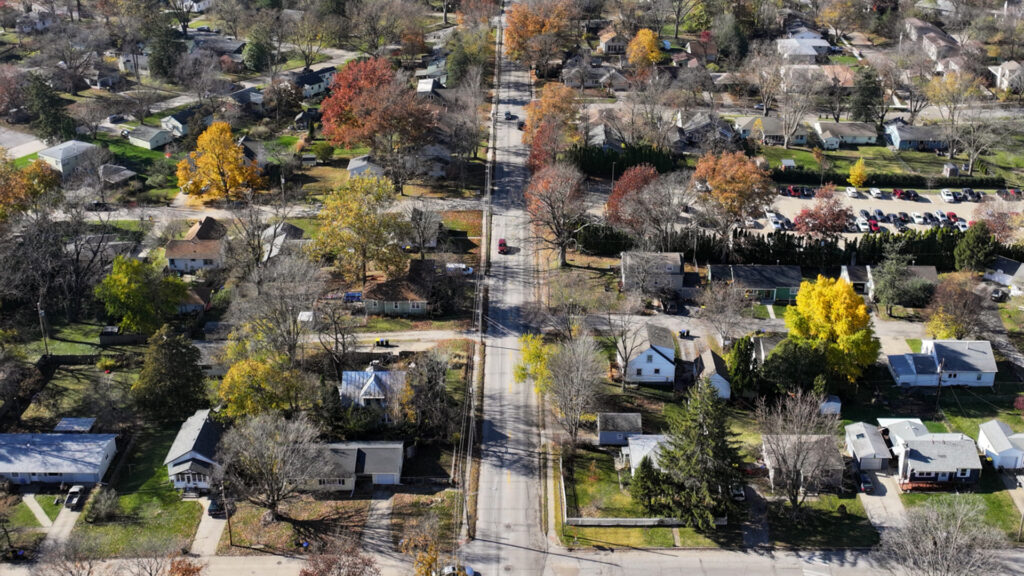In a recent issue of Iowa Architect, Grant Nordby’s article, “The Cost is Too D*** High” doesn’t pull any punches. And frankly, neither should we.
The piece offers a grounded view of what it will take to address housing affordability: smarter construction, zoning reform, intentional policy, and coordinated investment. The concept of the “missing middle” takes center stage, and for good reason. Middle-income households—those earning too much for assistance but not enough to afford today’s inflated market—are increasingly being priced out. This isn’t just a housing problem. It’s an economic development warning sign.
These are the people who staff our schools, care for our families, and run our small businesses. They are critical to the health of our communities, and they’re being pushed further from the places they work and serve.
In Johnson County, where population growth has surged 38% since 2000, demand is running up against a housing system that wasn’t built for today’s needs. It’s not just that we don’t have enough homes. We don’t have the right mix of housing types.
Signs of Progress, But a Bigger Need
We’re not starting from scratch. Johnson County recently committed $500,000 to preserve affordable housing in Iowa City. A countywide housing needs assessment is underway to guide future development. Iowa City’s adoption of a new Form-Based Code has the potential to unlock walkable, mixed-use neighborhoods and more diverse housing in traditionally single-family areas. That’s a major win for housing supply and choice.
But even with these steps, the shortage remains staggering. In 2023, Johnson County had a deficit of 8,205 affordable rental units for extremely low-income residents. That’s 14% of Iowa’s entire shortfall, even though we only make up 5% of the state’s population. Over half of local renters are cost-burdened, and more than a third are spending over half their income on housing. Those numbers point to systemic stress, not isolated cases.
At the same time, the economics of building have shifted. Construction labor is more expensive. Productivity is stagnant. Skilled workers are in short supply. Zoning has long favored large-lot, single-family development, limiting more affordable alternatives. And while household sizes shrink, home sizes have grown—from 1,660 square feet in 1973 to over 2,500 square feet today.
What It Will Take
We don’t need to build cheaper. We need to build smarter, using coordinated strategies and local tools that respond to today’s reality.
The article outlines a strong path forward:
- Make construction more efficient with modular design, pre-reviewed plans, and off-site fabrication.
- Invest in the building trades and support education pathways that meet modern labor needs.
- Update zoning to allow housing types that reflect how people live now.
- Cut red tape while maintaining safety and quality.
- Create local funding tools to support the kinds of programs that have worked elsewhere, such as down payment assistance, gap funding for developers, rehab programs, and neighborhood stabilization.
These strategies are already working in other cities. We can adapt and scale them here, but only with the right resources.
A Narrowing Window
Federal support for housing has always been limited, and now many of those programs are under threat. At the same time, local governments are facing pressure from multiple directions. ARPA funds are winding down. State-level policies are affecting property tax revenue. Costs are rising.
Communities have fewer tools at a time when the need is most urgent. This is the moment to act locally and think strategically. We need flexible, reliable funding streams that empower cities and counties to invest in housing—across price points, across types, and with long-term impact in mind.
Because housing isn’t just about where people sleep. It’s about economic mobility, workforce stability, and community resilience. It’s about whether a nurse can live near her hospital. Whether a teacher can afford to stay in the district where they inspire students every day.
If we treat housing like the essential infrastructure, it is—just as vital as roads, broadband, or clean water—we can grow in a way that is inclusive, sustainable, and economically sound.
Greater Iowa City, Inc. is exploring what that could look like. If you want to be part of that conversation, reach out: melanie@greateriowacity.com.
The bottom line? The cost is too high. But the solutions are within reach if we’re ready to lead.





